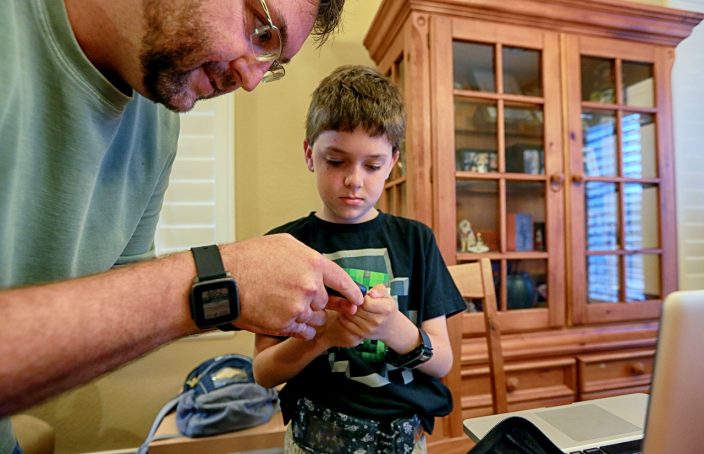There’s a new trend developing in type 1 diabetes management. People are creating homemade artificial pancreases, and the results are impressive.
Tech-savvy individuals in the US have been developing closed loop artificial pancreas systems after following instructions that had been posted online. They have then been able to use the devices to great effect on family members with type 1 diabetes.
An artificial pancreas is an advanced piece of technology within diabetes research. It involves an externally worn insulin pump communicating wirelessly to a continuous glucose monitor worn as a patch on the skin. The glucose monitor then feeds blood sugar levels into a small computer which calculates how much insulin is required for a patient.
Two studies are being conducted this year to assess if the artificial pancreas could be commercially trialled providing it receives European regulation and approval. But, in America, people with diabetes are starting to become impatient; commercial development and regulatory approval can take a long time.
The US Food and Drug Administration (FDA) is set to review Medtronic’s 670G system later this year, and the FDA has made approving such devices a priority. Johnson & Johnson are among the other companies working on artificial pancreas systems.
The perceived lack of progress is what led 27-year-old Dana Lewis, who has type 1 diabetes, to launch DIYPS.org (the Do-It-Yourself Pancreas System) in 2013.
Seattle-based Ms. Lewis originally wanted to augment continuous glucose monitor (CGM) alerts so that they could wake up heavy sleepers who don’t respond to them during the night. She posted her progress on Twitter and, alongside Scott Leibrand, began experimenting with an existing FDA-approved insulin pump.
By the end of 2014, Ms. Lewis managed to get DIYPS working as a closed loop system. Other features included real-time processing of blood glucose, predictive alerts for hypoglycemia and hyperglycemia, and updated recommendations for required insulin or carbohydrate.
She then launched OpenAPS.org to show how this technology could be made safely and effectively by other people.
While the FDA regulates companies that make and market medical devices, they do not have the authority to dictate how these devices can be used. Therefore, the FDA can’t stop patients fiddling with their own insulin pumps providing they don’t sell or distribute them.
Jason Calabrese, a software engineer, has closely followed the OpenAPS research. He has a young son with type 1 diabetes called Andrew (pictured with his father), and set about hacking an old insulin pump to regulate the amount of insulin depending on blood glucose levels, including halting insulin delivery when low.
The outdated insulin pump Mr Calabrese used connects with a small radio stick which is connected to a CGM, a computer motherboard and a battery pack. It is roughly the size of a headphone case.
After spending two months building the device and many more weeks testing it, he decided to try it out on his son on weekends and at night. It performed well, and after Mr. Calabrese received approval from Andrew’s doctor, Andrew was able to wear the home-built device on his belt to school.
Mr. Calabrese told the Wall Street Journal: “Diabetes is dangerous anyway. Insulin is dangerous. I think what we are doing is actually improving that and lowering the risk.”
There are restrictions to this project, though. People generally have to have some expertise in computer programming to develop devices successfully. Ms. Lewis and others who have created successful devices can offer advice, but then it’s down to the individual to put the device together and know how to troubleshoot.
Then there are times where the device fails. Sarah Howard, 49, met Ms. Lewis in 2015 and together with her husband built a system for her to manage her type 1 diabetes. One of her two sons also has the condition.
The device was successful at first, and Ms. Howard didn’t have to wake up in the night to check her son’s blood sugar levels. But then one time, it didn’t work. Her 11-year-old son brought the device to school one day and it stopped working. This would have then broken the warranty for both the CGM and the insulin pump.
While there is nothing illegal about developing home-made artificial pancreases based on regulated and approved insulin pumps, it is something that requires sophisticated technology and a strong understanding of engineering. Making one is not to be taken lightly.
However, these stories can be met with optimism by the diabetes community. The home-made devices are far from a cure, but they serve as an inspiring example of people trying to independently create better lives for themselves and their families.
And if it leads medical companies to put greater focus on developing their own artificial pancreas systems, then that’s not a bad thing either.
This blog was adapted from the Wall Street Journal. Picture credit: Wall Street Journal.




